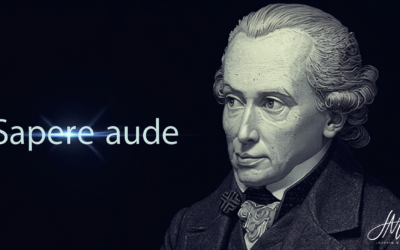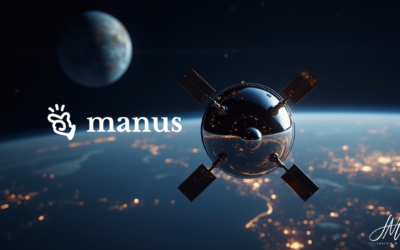In the complex world of large-scale projects, the EPC (Engineering, Procurement, and Construction) industry often resembles a huge, uncoordinated orchestra. Each department and supplier plays its instrument, but without a capable conductor, the result can be more cacophony than a symphony. This is where Artificial Intelligence (AI) enters the stage – not as a replacement for the talented musicians, but as a brilliant conductor, guiding the entire ensemble from chaotic concerto to perfectly orchestrated masterpiece.
This article sheds light on how AI as a digital maestro orchestrates the project symphony in EPC projects, taking into account both the perspectives of the clients (the audience) and the suppliers (the musicians). We show how the traditional 3-week process is being revolutionized by AI-supported real-time procurement and what opportunities this opens up for the industry.
Current challenges in EPC projects
EPC projects face numerous challenges, especially in the procurement process:
- Complexity of tender documents: The exchange and review of tender documents is time-consuming and error-prone. Both clients and suppliers have to check large volumes of documents for plausibility and updates.
- Time required: With up to three weeks for the preparation, submission, and clarification of tenders, suppliers, and purchasers are under considerable pressure, which can impair the efficiency of the entire process.
- Whip effect: This effect describes the increasing fluctuation of order quantities and stock levels along the supply chain. In EPC projects, this often leads to delays and inefficiencies, as suppliers have to react to changes at short notice.
- Lack of transparency: a lack of real-time information on project progress and changes can lead to delays and cost increases.
- Resource-intensive data preparation: the preparation and analysis of tender documents ties up considerable human resources, which can lead to capacity bottlenecks and potential quality fluctuations.
- Fluctuating number of projects: The number of EPC projects often varies greatly, which leads to challenges in personnel planning and capacity utilization.
The potential of AI to solve these challenges
AI as a digital conductor offers promising solutions to these challenges:
- Score analysis in real-time: AI can analyze tender documents at lightning speed and identify discrepancies like a conductor who knows the score perfectly. Studies show that document review time can be reduced by up to 70%, although exact figures may vary depending on implementation and project type.
- Perfect timing: AI makes it possible to keep the pace of the project precise. Instead of weeks of preparation, harmonious quotes can now be produced in just a few days. The entire quotation process can be shortened from three weeks to a few days, giving suppliers and buyers more time for quality improvements.
- Prediction of dissonance: Similar to a conductor anticipating potential problems in the composition, AI can predict and minimize the whiplash effect.
- Real-time feedback: Like a conductor who keeps an eye on every instrument, AI monitors the progress of the project in real-time and provides immediate feedback.
- Optimal staffing: AI helps to find the right “musicians” for each “passage” by optimizing resource allocation and reducing reliance on overloaded sections.
- Flexibility with fluctuating project numbers: AI systems enable more flexible adaptation to fluctuating workloads. Companies can manage with fewer staff and still react quickly to peaks in demand.
Case study: AI-supported procurement in an EPC project
Let’s imagine the following scenario:
An EPC company implements an AI system to support the procurement process for a large infrastructure project. The system uses NLP to analyze tender documents and extract relevant information automatically. At the same time, it uses machine learning to predict supplier performance based on historical data. 6. flexibility with fluctuating project numbers: AI systems enable more flexible adaptation to fluctuating workloads. Companies can manage with fewer staff and still react quickly to peaks in demand.
Specific AI technologies and their applications
- Natural Language Processing (NLP): for the rapid analysis and processing of tender documents.
- Machine Learning: for optimizing processes and creating predictive models for project risks and supplier performance.
- Predictive Analytics: for predicting project risks, delays, and fluctuations in demand.
- Computer Vision: for monitoring construction sites and quality control.
Results:
- Reduction of the total processing time from three weeks to a few days
- Increased quality of quotations thanks to more time for strategic considerations
- Improved supplier selection through data-driven decisions
- Minimization of the whip effect through more accurate demand forecasts
- More flexible adaptation to fluctuating project numbers and workloads
Supplier perspective: A supplier who previously struggled to cope with short-term changes can now better plan their production thanks to AI-powered forecasting. This leads to a more stable supply chain and improved collaboration with the EPC company.
Obstacles and concerns with AI implementation
Despite the great potential, there are challenges:
- Lack of understanding and acceptance: many companies are still in the pilot phase of AI implementation.
- Data protection and security: especially when processing sensitive project data
- Integration problems: Integrating AI into existing systems can be complex.
- Skills shortage: there is often a lack of experts who can effectively implement and manage AI systems.
- Ethical considerations: The use of AI in decision-making processes raises ethical issues.
Strategies for successful integration
A holistic approach is required to overcome these challenges:
- Triple AI approach: considering people, technology, and organization in AI implementation(blog.iao.fraunhofer.de).
- Training and further education: Investment in training employees in the use of AI technologies.
- Step-by-step implementation: start with pilot projects and gradually expand.
- Cooperation with AI experts: partnerships with technology companies or research institutions.
- Ethical guidelines: development of clear guidelines for the responsible use of AI.
Outlook
The integration of AI into EPC projects promises to transform the cacophony of the past into a harmonious symphony of the future. As an omniscient conductor, AI not only coordinates the various instruments of the project orchestra, but also composes adaptive scores that adjust to changing conditions.
The transition from an often improvised performance to a perfectly orchestrated performance offers enormous advantages:
- Virtuosic performances: More time for fine-tuning leads to excellent, nuanced “performances” (offerings and project executions).
- Harmonious risk management: early recognition of “discords” enables proactive intervention.
- Economic orchestration: costs can be significantly reduced through precise coordination and optimized “arrangements”.
- Ensemble spirit: transparency and predictability promote closer cooperation in the “orchestra” (project team and suppliers).
- Increased flexibility: AI enables companies to react more flexibly to fluctuating project numbers and use resources more efficiently.
While the challenges of “hiring” this digital conductor can be significant, the potential benefits outweigh the challenges. EPC companies that successfully integrate AI will be able to perform even the most complex “symphonies” (projects) with flying colors – even if the concert halls (market conditions) are constantly changing.
The future of the EPC industry lies in the creation of perfectly orchestrated digital symphonies, where AI wields the baton but human expertise and creativity bring the music to life. The key to success lies in a balanced interplay of technological innovation and human skill that showcases both the vision of the composer (client) and the musicians (suppliers) skills.






